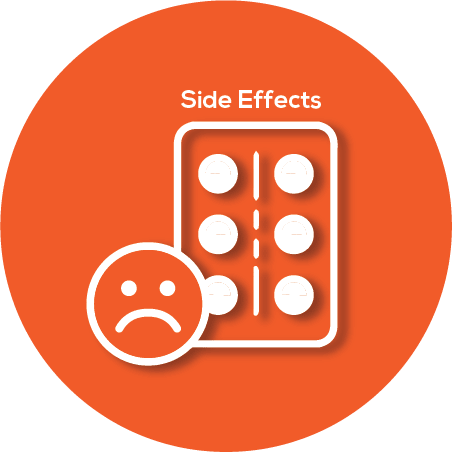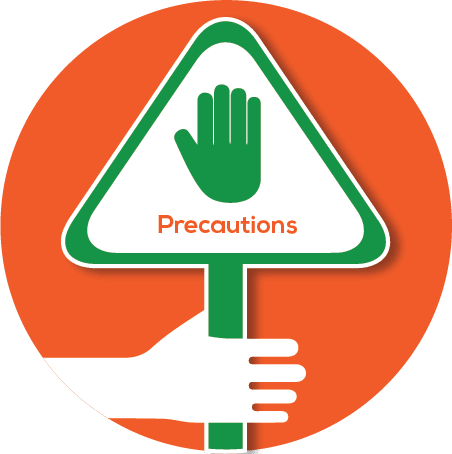Ofloris NZ Oral Suspension NITAZOXANIDE + OFLOXACIN
Ofloris NZ Oral Suspension is a prescription medication that should be taken as directed by your doctor It can be taken with or without food but it is important to take it at the same time every day for better effectiveness Do not exceed the recommended dose as an overdose can have harmful effects on your body If you forget to take a dose take it as soon as you remember It is important to complete the full course of treatment even if you start feeling better to ensure a complete recovery There may be some side effects associated with Ofloris NZ Oral Suspension such as nausea vomiting stomach pain loss of appetite headache etc To manage these side effects it is recommended to maintain a healthy and balanced diet and drink plenty of fluids If any side effects worsen please contact your doctor immediately If you experience any allergic reactions such as rashes itching swelling shortness of breath etc seek medical attention right away Before taking this medication inform your doctor if you have any preexisting liver or kidney problems Also let your doctor know about any other medications you are taking for any health conditions Pregnant or breastfeeding women should consult with their doctors before taking this medication It is important to avoid alcohol while using this medication as it can increase dizziness While Ofloris NZ Oral Suspension typically does not impair your ability to drive if it makes you feel sleepy or dizzy refrain from driving If you have a known allergy to this medication do not use it and consult your doctor Taking proper rest during the treatment is advised for the medication to work effectively


Are the medicines in combination of Nitazoxanide and Ofloxacin safe to take together?
Nitazoxanide, which is an antiparasitic medication, and Ofloxacin, which is an antibiotic used to treat bacterial infections, do not have any well-documented significant drug-drug interactions when taken together. However, it is always important to be cautious when taking multiple medications. To monitor for any potential interactions, it is important to keep track of any new or unusual symptoms that may arise after starting these medications. This could include changes in how you feel or any side effects that seem to worsen. Regular check-ups with your healthcare provider can help ensure that the medications are working as intended and that no interactions are occurring. Always inform your doctor about all the medications you are taking, including over-the-counter drugs and supplements, to help them monitor for any possible interactions.

Are there harms and risks from taking combination of Nitazoxanide and Ofloxacin?
Nitazoxanide, which is used to treat infections caused by certain parasites, commonly causes side effects like nausea, which is a feeling of sickness with an inclination to vomit, and abdominal pain, which refers to discomfort in the stomach area. Ofloxacin, which is an antibiotic used to treat bacterial infections, often leads to side effects such as dizziness, which is a sensation of spinning or losing one's balance, and headache, which is pain in the head. Both medications can cause gastrointestinal issues, which relate to the stomach and intestines, such as diarrhea, which is the condition of having loose or liquid bowel movements. However, Ofloxacin has unique adverse effects like tendonitis, which is inflammation of a tendon, and photosensitivity, which is an increased sensitivity to sunlight. Nitazoxanide does not share these specific adverse effects.

Can I take combination of Nitazoxanide and Ofloxacin if I am pregnant?
Nitazoxanide, which is an antiparasitic medication, is used to treat infections caused by parasites. During pregnancy, the safety of Nitazoxanide is not well established, and it should be used only if clearly needed and prescribed by a healthcare provider. Ofloxacin, which is an antibiotic used to treat bacterial infections, also has limited safety data available for use during pregnancy. It is generally advised to avoid Ofloxacin during pregnancy unless the benefits outweigh the risks, as it may affect the developing baby. Both Nitazoxanide and Ofloxacin share the common attribute of having limited safety data available for use during pregnancy. They should only be used when prescribed by a healthcare provider who has assessed the potential risks and benefits. It is important for pregnant individuals to consult their healthcare provider before using either medication to ensure the safety of both the mother and the developing baby.

Can I take combination of Nitazoxanide and Ofloxacin while breastfeeding?
Nitazoxanide, which is an antiparasitic medication, has limited information available regarding its safety during breastfeeding. It is generally advised to use it with caution and under medical supervision when breastfeeding. Ofloxacin, which is an antibiotic used to treat bacterial infections, also has limited data on its safety during lactation. However, it is known to pass into breast milk in small amounts. Both medications should be used only if the potential benefits outweigh the risks to the infant. A common attribute of both Nitazoxanide and Ofloxacin is the lack of comprehensive studies on their safety during breastfeeding. Both should be used cautiously and under the guidance of a healthcare provider. Unique to Nitazoxanide is its use in treating parasitic infections, while Ofloxacin is specifically used for bacterial infections. It is crucial to consult a healthcare professional before using either medication while breastfeeding.

Can I take combination of Nitazoxanide and Ofloxacin with other prescription drugs?
Nitazoxanide, which is used to treat infections caused by parasites, has few known drug interactions. However, it is important to be cautious when taking it with other medications that affect the liver, as it is processed by the liver. Ofloxacin, which is an antibiotic used to treat bacterial infections, can interact with several other drugs. It should not be taken with antacids, which are substances that neutralize stomach acid, or supplements containing calcium, magnesium, or iron, as these can reduce its effectiveness. Both Nitazoxanide and Ofloxacin share the common attribute of being used to treat infections, but they target different types of organisms. While Nitazoxanide is more focused on parasites, Ofloxacin targets bacteria. It is important to consult a healthcare provider before combining these medications with others to avoid potential interactions and ensure safe use.

For how long is combination of Nitazoxanide and Ofloxacin taken?
Nitazoxanide is typically used for a short duration, often around 3 days, to treat infections like diarrhea caused by parasites. It works by interfering with the energy production of the parasites, which are tiny organisms that can cause disease. On the other hand, Ofloxacin is usually prescribed for a longer period, often 7 to 14 days, to treat bacterial infections. It belongs to a class of drugs called fluoroquinolones, which work by killing bacteria or stopping their growth. Both Nitazoxanide and Ofloxacin are used to treat infections, but they target different types of organisms. While Nitazoxanide is effective against parasites, Ofloxacin is used for bacterial infections. Despite their differences, both medicines aim to eliminate the cause of the infection and help the body recover. It's important to follow the prescribed duration to ensure the infection is fully treated.

How does combination of Nitazoxanide and Ofloxacin work?
Nitazoxanide is an antiparasitic medication, which means it fights infections caused by parasites. It works by interfering with the energy production of the parasites, which are tiny organisms that can cause disease. This action stops the parasites from growing and multiplying, helping the body to clear the infection. Ofloxacin is an antibiotic, which is a type of medicine used to treat bacterial infections. It works by inhibiting the bacteria's ability to make DNA, which is the genetic material necessary for them to grow and reproduce. This action kills the bacteria or stops them from multiplying. Both Nitazoxanide and Ofloxacin are used to treat infections, but they target different types of organisms. While Nitazoxanide targets parasites, Ofloxacin targets bacteria. They both help the body fight infections by stopping the growth of harmful organisms.

How does one take combination of Nitazoxanide and Ofloxacin?
Nitazoxanide should be taken with food to improve absorption, which means the body can use the medicine more effectively. There are no specific food restrictions while taking Nitazoxanide, but it's always good to follow a balanced diet. Ofloxacin can be taken with or without food, but it is important to take it with a full glass of water. Avoid taking it with dairy products like milk or yogurt, or with calcium-fortified juices, as these can interfere with the medicine's effectiveness. Both medicines are used to treat infections, but they work in different ways. Nitazoxanide is often used for parasitic infections, while Ofloxacin is an antibiotic used for bacterial infections. It's important to follow the prescribed dosage and complete the full course of treatment for both medicines to ensure the infection is fully treated.

How do I know if combination of Nitazoxanide and Ofloxacin is working?
The benefits of Nitazoxanide and Ofloxacin are measured by their effectiveness in treating specific infections. Nitazoxanide is an antiparasitic medication, which means it is used to treat infections caused by parasites, such as certain types of diarrhea. Its benefit is assessed by its ability to reduce symptoms and clear the infection. Ofloxacin is an antibiotic, which means it is used to treat bacterial infections, such as urinary tract infections and respiratory infections. Its benefit is measured by its ability to eliminate bacteria and resolve symptoms. Both medicines share the common attribute of being used to treat infections, but they target different types of pathogens. They are both assessed by their effectiveness in reducing symptoms and clearing infections. However, Nitazoxanide is unique in its antiparasitic action, while Ofloxacin is unique in its antibacterial action.

How do I store combination of Nitazoxanide and Ofloxacin?
Nitazoxanide, which is used to treat certain parasitic infections, does not require refrigeration. It should be stored at room temperature, which means keeping it in a place that is not too hot or too cold, away from direct sunlight and moisture. Ofloxacin, which is an antibiotic used to treat bacterial infections, also does not need refrigeration. It should be stored at room temperature, away from light and moisture. Both medicines share the common attribute of being stored at room temperature, which is typically between 68°F and 77°F (20°C and 25°C). They should be kept in their original containers and out of reach of children. While Nitazoxanide is used for parasitic infections, Ofloxacin is used for bacterial infections, highlighting their unique uses.

How effective is combination of Nitazoxanide and Ofloxacin?
Nitazoxanide is an antiparasitic medication, which means it is used to treat infections caused by parasites. It is effective against a variety of parasites, including those that cause diarrhea. Ofloxacin is an antibiotic, which means it is used to treat bacterial infections. It is effective against a wide range of bacteria, including those that cause respiratory and urinary tract infections. Both Nitazoxanide and Ofloxacin share the common attribute of being used to treat infections, although they target different types of pathogens. They are both taken orally, which means they are consumed by mouth, and they work by interfering with the ability of the pathogens to survive and multiply. The unique attribute of Nitazoxanide is its effectiveness against parasites, while Ofloxacin's unique attribute is its broad-spectrum activity against bacteria. Together, they provide a comprehensive approach to treating infections caused by different types of microorganisms.

How long does it take for combination of Nitazoxanide and Ofloxacin to work?
The time it takes for a combination medicine to start working depends on the individual medicines it contains. For example, if the combination includes ibuprofen, which is a pain reliever and anti-inflammatory drug, it typically starts working within 20 to 30 minutes. If it includes paracetamol, which is another pain reliever, it usually begins to work within 30 to 60 minutes. Both medicines are used to relieve pain and reduce fever, which means they share these common attributes. However, ibuprofen also reduces inflammation, which is swelling and redness, while paracetamol does not. When combined, these medicines can provide a broader range of relief, addressing both pain and inflammation more effectively. Always follow the dosage instructions provided by your healthcare provider or the medicine's packaging.

What disease or symptom is combination of Nitazoxanide and Ofloxacin used for?
Nitazoxanide is used to treat infections caused by certain parasites, which are organisms that live on or in a host organism and get their food from or at the expense of their host. It is commonly used for conditions like diarrhea caused by Giardia lamblia or Cryptosporidium parvum, which are types of parasites that infect the intestines. Ofloxacin is an antibiotic used to treat bacterial infections, which are infections caused by harmful bacteria. It is effective against a variety of infections, including those of the urinary tract, respiratory tract, and skin. Both Nitazoxanide and Ofloxacin are used to treat infections, but they target different types of organisms. Nitazoxanide is specific for parasitic infections, while Ofloxacin is used for bacterial infections. They both help in reducing the symptoms of infections and improving health, but they work in different ways to target the organisms causing the infections.

What is combination of Nitazoxanide and Ofloxacin?
Nitazoxanide is commonly used to treat infections caused by parasites, such as giardiasis, which is an infection of the intestines, and cryptosporidiosis, which is a diarrheal disease. It works by interfering with the energy production of the parasites, effectively stopping their growth. Ofloxacin, on the other hand, is an antibiotic used to treat bacterial infections like urinary tract infections and respiratory infections. It works by inhibiting the bacteria's DNA replication process, which prevents them from multiplying. Both medicines are used to treat infections, but Nitazoxanide targets parasites while Ofloxacin targets bacteria. They both work by disrupting the life cycle of the organisms causing the infection.

What is the usual dose of combination of Nitazoxanide and Ofloxacin?
The usual adult daily dose for Nitazoxanide, which is an antiparasitic medication used to treat infections caused by parasites, is typically 500 mg taken twice a day. On the other hand, Ofloxacin, which is an antibiotic used to treat bacterial infections, is usually prescribed at a dose of 200 mg to 400 mg taken twice a day. Nitazoxanide is unique because it targets parasites, making it effective against infections like giardiasis, which is an intestinal infection caused by a parasite. Ofloxacin is unique in its ability to treat a wide range of bacterial infections, including those affecting the urinary tract and respiratory system. Both medicines share the common attribute of being used to treat infections, although they target different types of pathogens. They are both taken orally and require a prescription from a healthcare provider.

Who should avoid taking combination of Nitazoxanide and Ofloxacin?
Nitazoxanide, which is used to treat certain parasitic infections, should be used with caution in people with liver or kidney problems. It may cause side effects like nausea, headache, and abdominal pain. Ofloxacin, which is an antibiotic used to treat bacterial infections, should not be used by people with a history of tendon disorders or those who have had allergic reactions to similar drugs. It can cause side effects such as dizziness, nausea, and diarrhea. Both drugs should be used with caution in pregnant or breastfeeding women, and it's important to complete the full course of treatment even if symptoms improve. Both medications can interact with other drugs, so it's crucial to inform your healthcare provider about all medications you are taking. Always follow the prescribed dosage and consult your doctor if you experience any severe side effects.








.svg)
